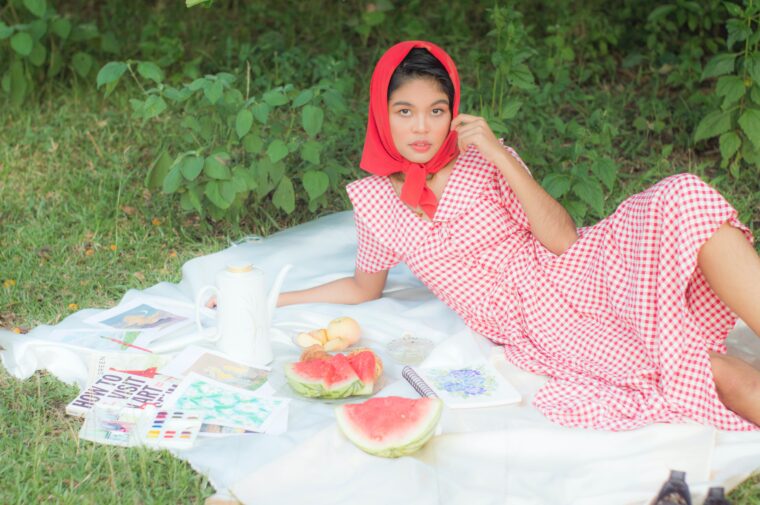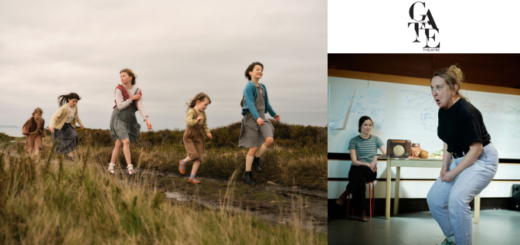Cottagecore
Even if you don’t know it by name, you’ve definitely seen Cottagecore in action. It’s an aesthetic that has steadily been migrating off social media and into fashion, interiors trends, and even Taylor Swift albums. Cottagecore is picnics, tea parties, reading poetry under a willow tree. It is verdant woodlands and babbling brooks. It is moss covered cottages and kitchen gardens. It is frolicking through wildflower fields or foraging for wild berries. Over the last year, as many people have sought a mental escape from the drain of lockdown and the tragedy of the pandemic, the popularity of Cottagecore has grown exponentially. In this sweet corner of the internet, people are able to imagine a lifestyle that is in-tune with nature and grounded in appreciation for life’s simple joys.

At its most basic level, it is a romanticism of western pastoral life. Within Cottagecore, technology and the stressors of modern life are notably absent. There are no jobs, no hustle, just the pleasant hum of workaday tasks like baking, small-scale farming, and crafting. This suspension of reality is part of its charm, allowing people to indulge in their fantasies of ‘getting away from it all’ and creating a quaint rural life. The imagery brings to mind cultural touchstones such as The Secret Gardenor Little Women.Yet, while the ascetics of Cottagecore feel nostalgic, its values are progressive. The majority of people creating Cottagecore content are Gen-Z or young millennials. Self-proclaimed ‘Cottagecore Lesbians’ are behind the trends earliest proliferation on TikTok. Accounts like @cottagecoreblackfolk are working to diversify the scene. Cottagecore also encompasses a rejection of consumerism and a detachment from the urbanism and capitalism, which have made it difficult for younger generations to carve out a sense of security. It is also unapologetically feminine without being constraining. All the domestic labour within Cottagecore is about mindfulness and self-sufficiency, rather than fulfilling any traditional gendered duty. As one creator, Rebecca Stice, told the Financial Times, “there’s a lot of female gaze in how Cottagecore is constructed — what women find beautiful and appreciate and celebrating certain traditionally female characteristics like gentleness and softness without judgment or pressure.”
In interiors, Cottagecore is manifesting as an alternative to minimalism. Sleek lines and sparse décor are replaced by reclaimed furniture and crafted pieces that tell a unique story. It is about creating a cosy environment with warm, organic colours and natural textures. It’s a bit about curated clutter—trinkets that have personal significance—and whimsical touches like vintage teacups and crockery. The dried flower trend (sales are up 115% in the UK), also fits in. We can see Cottagecore at work in fashion in the surging demand for chunky cardigans and vintage Laura Ashley dresses. Simone Rocha’s latest collaboration with H&M is alive with touches of Cottagecore. Pinterest reports a four times increase in the number of searches for ‘quilted clothes’ over 2020 as wearing patchwork blankets have become a fashion statement. Last summer’s viral ‘Strawberry Dress’ is peak Cottagecore.
The desire for something like Cottagecore is timeless. When the grind of modernity has left people feeling alienated from nature, there are often cultural movements which seek to reset the balance. In this way, Cottagecore is similar to other escapist trends like tiny homes and forest bathing. However, life within the pandemic appears to have especially driven its appeal. We have seen people become more interested in alternatives to city life. There’s been a boom in rewarding, low-stakes hobbies likes embroidery and knitting. Garden centres have been overrun with demand. We’ve gone back to pickling and preserving and bread baking. Cottagecore romanticises these activities while letting us escape the reality of why we are doing them. We can imagine a life where our isolation and an abundance of time for domestic activities, could be an intentional, fulfilling lifestyle choice rather than a consequence of lockdowns.
The thing about Cottagecore is that it is an onlineaesthetic. Only a minority of people are embracing the full lifestyle offline. Yet, Cottagecore doesn’t ask us to. Most people can start a windowsill herb garden, bake a pie, put on a vintage dress, or find a field to frolic in, without having to live in a remote cottage. We can all enjoy getting lost in a scroll through Cottagecore social media. In this way Cottagecore represents a collective dream—a shared mood board for many. In these challenging times, it has never been more important for brands to keep sight on consumers’ dreams and understand their sources of hope.




